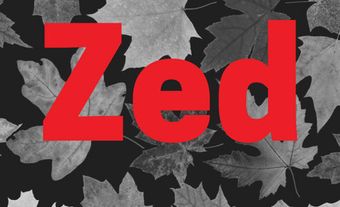Linguistics is the study of language. Language accompanies almost all human activities, and is the medium for many of them. The subject of speculation and inquiry throughout history, in the 20th century its study has come to be called "linguistics," and this term characterizes a modern emphasis, with special methods and techniques.
The foundations of the modern discipline were laid at the beginning of the 20th century. Ferdinand de Saussure, a professor at the University of Geneva, is credited with bringing together the results of many types of language study into a coherent discipline. Numerous scholars elaborated and refined de Saussure's framework in the next 3 decades. Among the influential early contributors were Nikolas S. Trubetzkoy and Roman Jakobson (USSR), Edward Sapir and Leonard Bloomfield (US), J.R. Firth (Britain), Louis Hjelmslev (Denmark) and André Martinet (France). Since 1950 linguistics has become firmly established throughout the world. Much of its rapid growth is due to the stimulating and often controversial work of American linguist Noam Chomsky, beginning with his first book, Syntactic Structures (1957). Chomsky's ideas presented challenges not only to the tradition begun by de Saussure, but also to philosophers, mathematicians and psychologists.
Linguistics in Canada
Canada is rich in languages, with dozens of Indigenous languages, 2 official languages (see English Language; French Language) and several flourishing immigrant languages such as Italian, Portugese, Ukrainian, Greek, Chinese and Japanese (see Ethnic Languages). Much of Canada's political, cultural and social distinctiveness and many of its national issues are rooted in multilingualism. Language and language-related studies have inevitably played an important part in Canadian society, and the study of linguistics as a systematic discipline has found fertile soil in Canada.
For many years linguists worked individually in branches of the government, in museums or in anthropolgy and language departments at universities. The first department of linguistics (still one of the largest in Canada) was formed at Université de Montréal in the late 1940s, when Jean-Paul Vinay gathered together several colleagues from various departments. A decisive step in promoting the discipline occurred at the University of Manitoba in 1954, when scholars from all parts of the country gathered to form the Canadian Linguistic Association. Henry Alexander of Queen's University became the first president (1954-56) and, during the early years, other founding members succeeded him: Gaston Dulong, J.B. Rudnyckyj, E.R. Seary, Vinay, M.H. Scargill, Jean Darbelnet and Walter S. Avis. The founding members also began publishing The Canadian Journal of Linguistics which, from its modest beginning in 1954, has come to provide an international forum for linguistic research.
During the 1960s many universities expanded to include departments of linguistics, beginning with Laval in Québec City (1961). Universities in English-speaking Canada caught up a few years later when Memorial, Toronto, Alberta and Simon Fraser expanded their programs into full departments. By 1975, departments had also been established at Sherbrooke, McGill, Québec à Montréal, Ottawa, Carleton, Calgary, British Columbia and Victoria. Now, although no new departments have been formed, most Canadian universities offer instruction in the subject. (See also Languages In Use.)
The Mental Representation of Language
Linguists seek to discover the principles that underlie the human capacity for language. They begin with some fairly obvious observations: that all speakers of a language can utter and understand an unlimited number of sentences; that their capability develops rapidly when they are children, without much conscious learning or teaching; that they automatically know whether a sentence is grammatical, sensible or ambiguous; and that they cannot discover the principles of their language abilities simply by thinking about what is going on in their minds while they are speaking.
The mental representation that allows speakers to use language is called the grammar (not to be confused with the rules intended to help students write better). Those simple observations about language prove that the grammar is not a simple device: it must be a finite device with an infinite output, because each human being can produce and comprehend a potentially unlimited set of utterances; it is organized on several different levels because speakers can judge sentences in several ways; it is subconscious, or tacit; and it is innate, rather than learned. The study of grammar makes up the core area of linguistics.
The Social Use of Language
Several subfields apply the results of grammatical study to numerous types of human interaction. Some of the more active subfields in Canada are as follows: phonetics, the study of the physiology and acoustics of speech sounds; psycholinguistics, the experimental study of the processes by which people comprehend and produce utterances; developmental linguistics. the observation of patterns by which children acquire and develop their language abilities; dialectology, the study of regional variations in spoken French, English or Indigenous languages; and sociolinguistics, the study of language as a medium of communication and self-expression.
Linguistics is applied to several practical tasks, including lexicography (the making of dictionaries), translation, teaching second languages (principally English language and French language), and legal issues (obscenity, trademark disputes, libel among others).
The Cultural Mosaic and Multilingualism
Canada is internationally renowned for its diversity. Instead of a melting pot in which immigrants are expected to integrate rapidly, Canada represents a cultural mosaic. With multiculturalism comes multilingualism, and as a result Canada provides a living laboratory for modern linguistics.
(See Culture; Ethnic and Race Relations).

 Share on Facebook
Share on Facebook Share on X
Share on X Share by Email
Share by Email Share on Google Classroom
Share on Google Classroom

